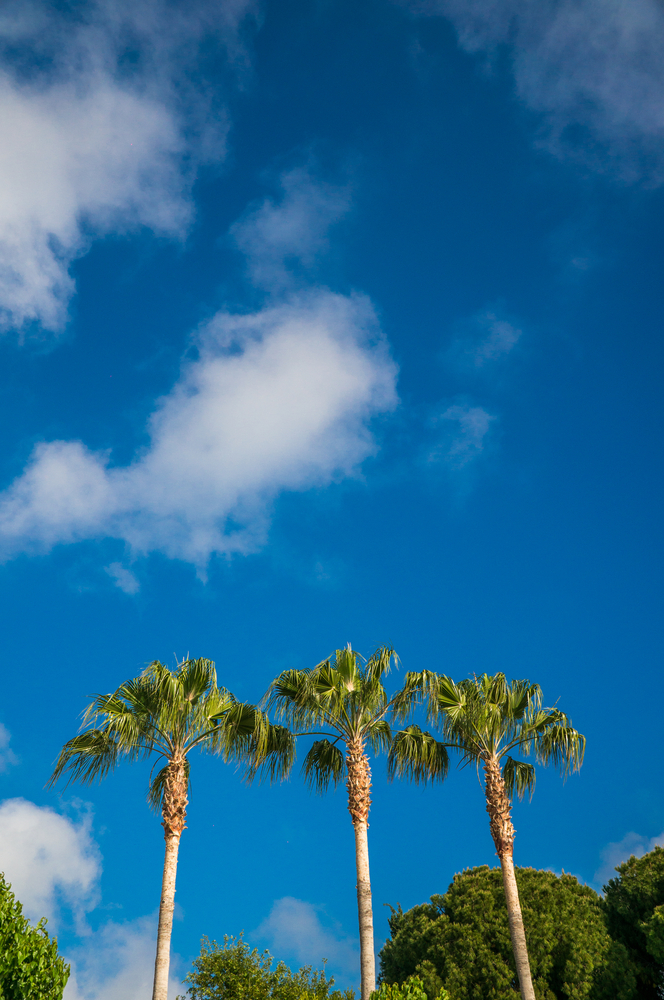Down and Dirty 12: Summer and "Summerer" (Summerer Part 1)

Down and Dirty Southern California Gardening
A weekly GardenZeus article series to help gardeners succeed in Southern California’s unique climates and growing conditions.
Post 12: Summer and “Summerer:” The 5th Season for Gardening in Southern California (Summerer Part 1)
In Southern California we have five seasons for gardening: the same four that everyone knows, and a 5th season. I call it “summerer,” that challenging period in hot inland areas between midsummer and whenever weather finally cools in fall. We could call this 5th season “Indian summer,” but this name doesn’t express the uniqueness of later summer and early fall in Southern California. Indian summer, after all, is often associated with mild or cool weather and moderate temperature extremes in most of the United States.
I intend the name “summerer” both humorously and seriously. The English language offers us the comparisons of smart and smarter, hot and hotter, happy and happier, so I ask you, dear fellow gardener, why not summer and summerer? Where is the joy and meaning in life if you don’t make up a word now and then?
Summerer in many Southern California areas is a lot like summer but at a higher intensity, typically with higher temperatures for longer periods, heat lingering at night, greater and ongoing plant stress and problems, more watering needed, more pests and diseases, and with more skill and attention needed to extend harvest and succeed with gardening. It’s the time when the fewest native and ornamental plants are in bloom, when plants and soils suffer the greatest stressors from drought after no rain since later winter or spring, when food and water are scarcest for almost all wildlife from insects to mountain lions, and therefore when pest pressure is usually the most intense.
Summerer usually begins between mid-July and late August depending upon annual temperature variations and how hot or cool the preceding spring and summer were, and persists until late September to late October, and sometimes into November. It’s often finally dispelled by the first significant rainstorm in October or November. It is most distinct and most important for gardeners to understand and manage effectively in hot inland areas where it can be the high-octane version of summer.
Starting a-few-to-several miles from the ocean, summerer in most areas is summer on fire, summer turned up to 11 on a scale from 1 to 10, summer distilled to 180 proof and blasted nonstop all day from a relentless sun hanging lazily in a cloudless sky regardless of how stressed your plants and topsoil might be and personally hot you might feel. Summerer is the daily outdoor oven, the time of worst-ever sunburns, the Mediterranean wickedly inverted winter equivalent for purposes of vegetable gardening and for the seasonal lifecycles of many native plants in California. You think there was no rain during summer? If there is a less-than-no rain drought option, it would occur during summerer.
Summerer is the season when most plants, from annual flowers to trees, are under varying degrees of stress and duress, often slowed or limited by heat and weather such that they may be essentially surviving on partial biological pause until environment conditions improve; and the time of year in inland areas when it’s difficult-to-impossible to succeed with planting almost anything outdoors. It’s the time when you’re most likely to find dead annual and herbaceous plants if your attention happens to stray from them for a few days, or even one day.
In coastal and coastal-influence areas, summerer is the time when whatever cool-season crops are surviving after summer will usually end their harvest period and bolt or die; the time when cucurbits and other warm-season vegetable plants planted in spring or early summer may begin to succumb to leaf mildews, other diseases, and insect pests. Heat-tolerant vegetables often continue to thrive in coastal and coastal-influence areas, and it may be the time at the Southern-California coast when you see the best harvests of tomatoes and peppers.
“Down and Dirty Southern California Gardening” is a weekly GardenZeus article series in which expert Darren Butler shares more than 20 years of experience about what works and what doesn’t with gardening in Southern California:
Post 11: Nontoxic Habitat Traps for Earwigs
Post 13: Tips for “Summerer” Gardening In Hot Southern-California Areas (Summerer Part 2)
All articles in this series: Down and Dirty Southern California Gardening
GardenZeus Calfornia climate zones
Enter your California zip code for customized advice by plant